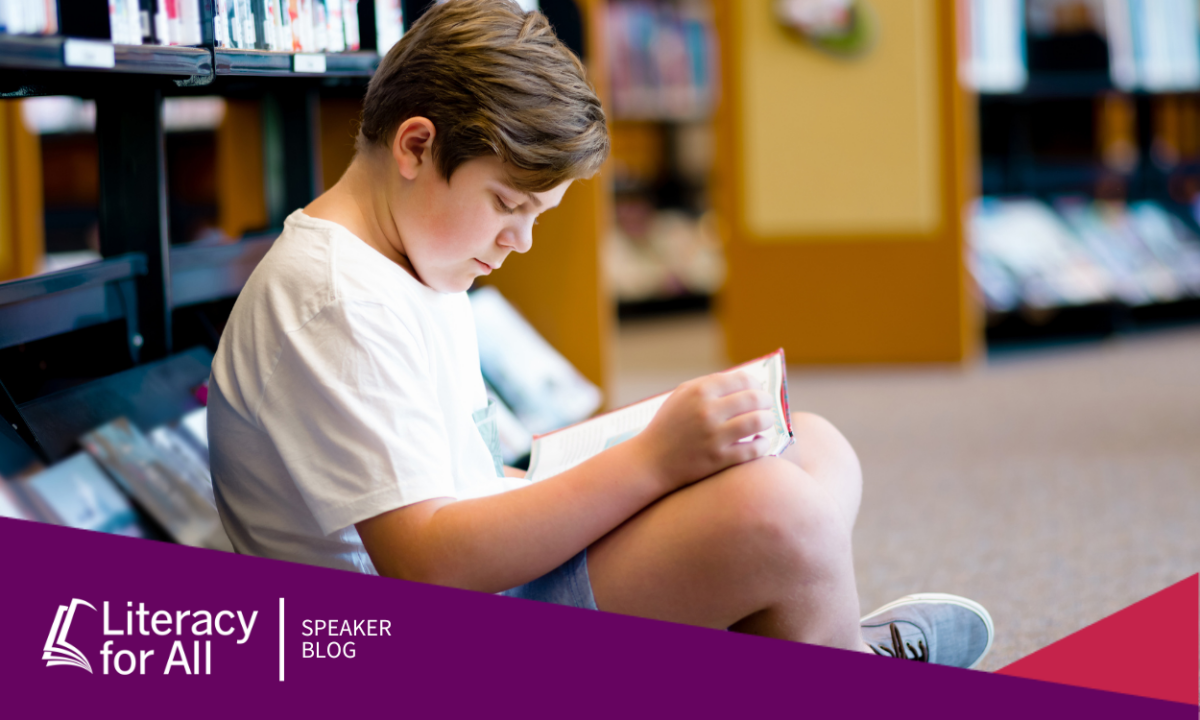I have spent my entire educational career helping others discover the joys of literacy: first as a classroom teacher, then as a reading specialist and finally, as a coach and teacher educator. I’ve focused on the skills and strategies needed so children can learn how to read, the coaching practices that support teachers in developing their literacy knowledge and even how to create classrooms and schools with joyful literacy communities.
Recently, I’ve been exploring a concept that I’ve come to believe is essential to our wellness and spirits as literacy educators: restorative reading.
Typically defined, something that is restorative serves to restore us to consciousness, vigor, or health, such as restorative movement, yoga, meditation, art and/or creativity.
Restorative reading is a particular kind of reading that soothes the body, sparks the mind and connects readers together in meaningful communities to make life better.
Put simply: it’s the kind of reading that truly matters to who we are, who we become and how we feel.
There are three key shifts in practices that set restorative reading apart with important implications for the classroom:
Turn reading habits into reading rituals:
While any kind of reading can bring physical, cognitive and emotional benefits, restorative reading pays close attention to the reading experience, including the nature of the physical setting, the mood of the surroundings and your presence in the experience.
The easiest way to turn a reading routine into a ritual is by enhancing the reading experience with our five senses. Depending on our classrooms, we can try things like finding a comfortable space, clearing the room of clutter, turning on a diffuser, playing preferred background noise and enjoying a beverage or snack.
These small rituals and routines not only help calm our nervous system for wellness, but they help us settle into the reading experience much more quickly, too.
Invest in the classroom library:
In restorative yoga, the kinds of movements and poses practiced are different from those in traditional vinyasa classes: they are more intentional, more relaxing and more calming. Just as in yoga, the kinds of books we read and how we read them matters greatly in restorative reading.
We want to choose books that help us feel seen, that help us expand and learn and help us widen our ideas of what is possible. The best way to accomplish this is to create strong classroom libraries with diverse literature across a variety of topics and text types and allow students to choose books that speak to their hearts.
Auditing our classroom libraries and building collections that meet the diverse needs of the students in front of us is the first step. Next, we Introduce students to the wide range of literature available to them and finally, teach them how to read with an open mind and heart.
Grow your reading circles:
The communities we surround ourselves with matter. Our reading circles have three layers: those physically close to us that we share books and reading with, those that we meet over a shared love of books in new contexts and the authors and mentors that fuel our love of reading.
Purposefully growing those reading circles to broaden our connections with others and the perspectives we consider heightens and deepens the entire reading experience. We can talk about books with our colleagues, create cross-classroom conversations and use special media to connect with authors and illustrators, too.
If you’d like to explore the idea of restorative reading in more depth, consider joining my LFA session. We’ll explore restorative reading for both teachers and students: what it is and why it matters, how it can make our actual lives better, which books are best and how to coach for it in the classroom, too.

Continue Your Learning at the 34th Annual Literacy For All Conference
Attend Stephanie’s November 4th presentation, “Restorative Reading for Coach, Teacher & Student Wellness.” And check out our other sessions with education leaders!





